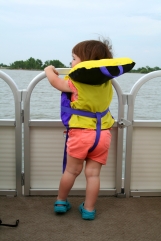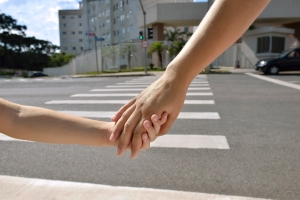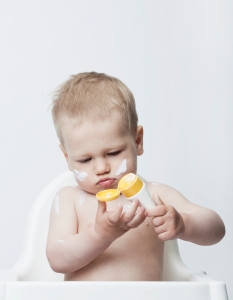7 Summer Safety Tips
by Kelley Jilek
Summer is the most fun, but also the most dangerous, time of year for children. The majority of emergency room visits for kids take place during summer months when children have an increased amount of free time to spend in active play, much of it outdoors and often near water. Follow these tips to help prevent summer injuries:
- Make sure young children are carefully supervised near all bodies of water, including wading pools, streams, ponds, and even standing buckets and containers of water. Life jackets should be worn near open bodies of water. Do not substitute floaties for life jackets. If a child is accidently turned upside down in water, some floaties can actually hold the child in that position. They can also slip off arms and tummies.
- Make sure children are wearing properly fitted helmets and protective gear every time they ride bikes, scooters, skateboards, or in-line skates. Make it a rule at your house for even the youngest children to form good habits. Make sure children know the rules of the road and never ride at dusk or at dark. Check with your park board or police department for safety programs children can participate in.
- Most of us are on the go during summer months, so make sure you are traveling safely. Children should ride in approved child safety seats that are suitable for their size and age. Check and follow manufacturers’ instructions. Never place a rear-facing infant seat in the front seat of your car. All children should ride in the back seat, which is the safest place.
 Children under the age of 10 should never cross a street alone. Build awareness from a young age by stopping at each corner and watching for traffic during outdoor walks. At dusk and after dark, make sure children are wearing bright and reflective clothing. Carry flashlights and make sure driveways are well lit.
Children under the age of 10 should never cross a street alone. Build awareness from a young age by stopping at each corner and watching for traffic during outdoor walks. At dusk and after dark, make sure children are wearing bright and reflective clothing. Carry flashlights and make sure driveways are well lit.- Children should be carefully supervised at playgrounds and parks. Be especially careful around older park equipment since many of these pieces do not have some of the more modern safety features built in. Visit playgrounds with appropriate equipment for your child’s age. Also look for safe surfaces underneath playgrounds, such as mulch, gravel, rubber, or sand.
 Use and carry sunscreen on a daily basis. Start with fresh sunscreen each year and look for waterproof formulas. Use a sunscreen with an SPF of at least 15, and reapply it often during swimming and exercise. Small children will skip and miss spots, so you’ll need to help them with this task each morning. Avoid playing outside during the late morning and early afternoon. Wear hats and protective clothing to shield skin from the sun.
Use and carry sunscreen on a daily basis. Start with fresh sunscreen each year and look for waterproof formulas. Use a sunscreen with an SPF of at least 15, and reapply it often during swimming and exercise. Small children will skip and miss spots, so you’ll need to help them with this task each morning. Avoid playing outside during the late morning and early afternoon. Wear hats and protective clothing to shield skin from the sun.- Know which bugs in your area can pose hazards to children and how to avoid them during certain seasons and times of the day. Make sure to eliminate standing water in your yard and use mosquito repellents with DEET. If you don’t want to use DEET on small children, avoid outdoor activities at dusk and dawn when mosquitoes are most active.
Visit www.kidshealth.org for more information on summer safety.
Back to blog listing